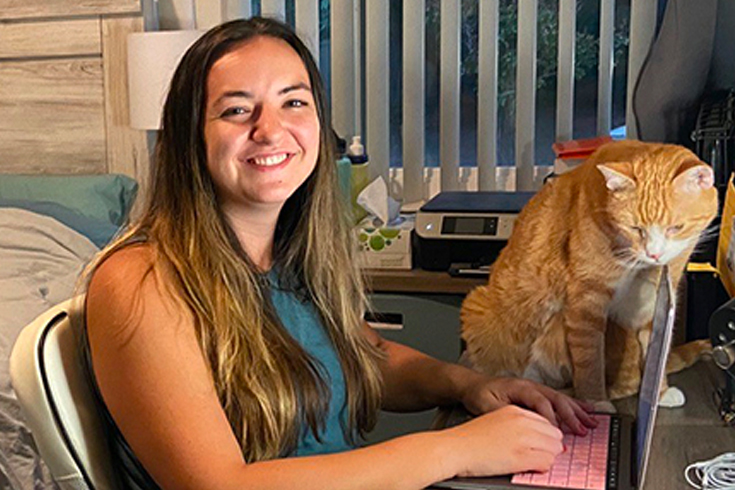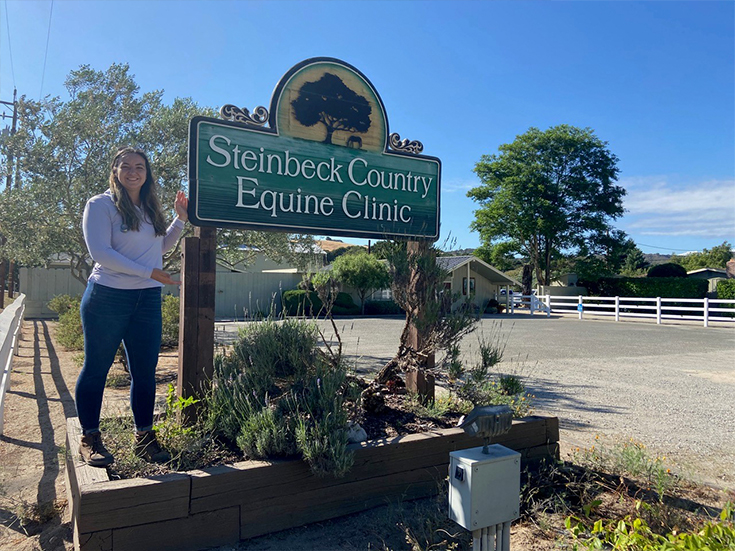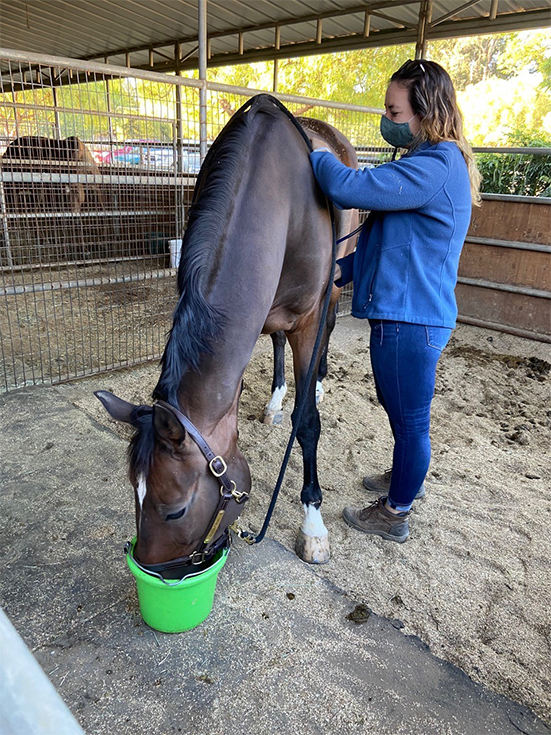Amber McElhinney – California
Amber McElhinney
I intend to pursue equine medicine as a career path and am interested in the racing industry as a whole, as well as how it differs in other countries. I originally planned to spend the summer in Melbourne, Australia doing research on Thoroughbred racehorses. My initial research proposal was to use GPS training data to compare locally bred and trained Australian horses with internationally bred horses doing their training at a quarantine facility, in hopes of attributing some of the differences in injury rates at the Melbourne Cup between these two groups to training differences. However, with COVID-19 travel was impossible and I had to rethink my plans. I decided to combine both clinical work and research into my revised summer plans while staying local to California.
For the first four weeks of the summer I did externships at two different equine clinics. First, I spent two weeks at Steinbeck Peninsula Equine Clinic in Monterey County, CA. While I was there, I stayed in a room on the clinic property, which allowed me to be close by for any after-hours emergencies. My days started out bright and early for treatments, where I would help give medications, take vital signs, and hand walk horses that were staying at the hospital for various reasons. During the workday, I spent time with the different doctors at the practice and saw a variety of appointments. Depending on the schedule each day, I would either go on ambulatory calls or stay at the clinic for inpatient procedures. I was able to scrub in on surgeries, help to recover horses from anesthesia, assist with lameness evaluations, and observe dental procedures. At night, I was also on call for any emergencies that came in.
I spent the second two weeks at Loomis Basin Equine Medical Center in Penryn, CA where I once again stayed on the clinic property. This clinic was quite a bit larger, with many more ambulatory veterinarians and a very large breeding operation. Here my days also began early with inpatient checks. We would then have rounds with clinicians and interns, where I learned a lot about veterinary medical concepts and was quizzed on my own knowledge. During business hours, I shadowed the clinic’s doctors to a wide range of appointments and observed various procedures, including surgeries and colic workups. At night I was once again on call for emergencies, both ambulatory and at the clinic. The hours were long, but in the few short weeks I spent at both clinics I gained an incredible amount of experience and had the opportunity to learn from an amazing group of veterinarians.
For the research component of my summer, I spent six weeks working on a similar project to what I had originally intended to do in Australia, but instead with Dr. Sue Stover’s lab at UC Davis. I remotely collected exercise history data for California Thoroughbred racehorses that had gotten standing Positron Emission Tomography (PET) scans at the Santa Anita racetrack between December of 2019 and July of 2020. Standing PET scans are a novel imaging modality in horses which allows more accurate diagnosis, and therefore prognosis, of equine injuries. I also collected exercise history data on three control horses that did not have PET scans for each horse that did have a scan. I compared the exercise histories of horses that had lameness issues and needed scans to those that did not with the aim to improve understanding of exercise risk factors for injury of Thoroughbred racehorses. The study I worked on is still ongoing, and my summer experience has opened doors for me to continue to work on research throughout my time in veterinary school and learn more about veterinary research. Even though my original plans for the summer did not pan out, I was still able to gain valuable experience both in clinical and research settings that will help me in my future career as an equine veterinarian.



